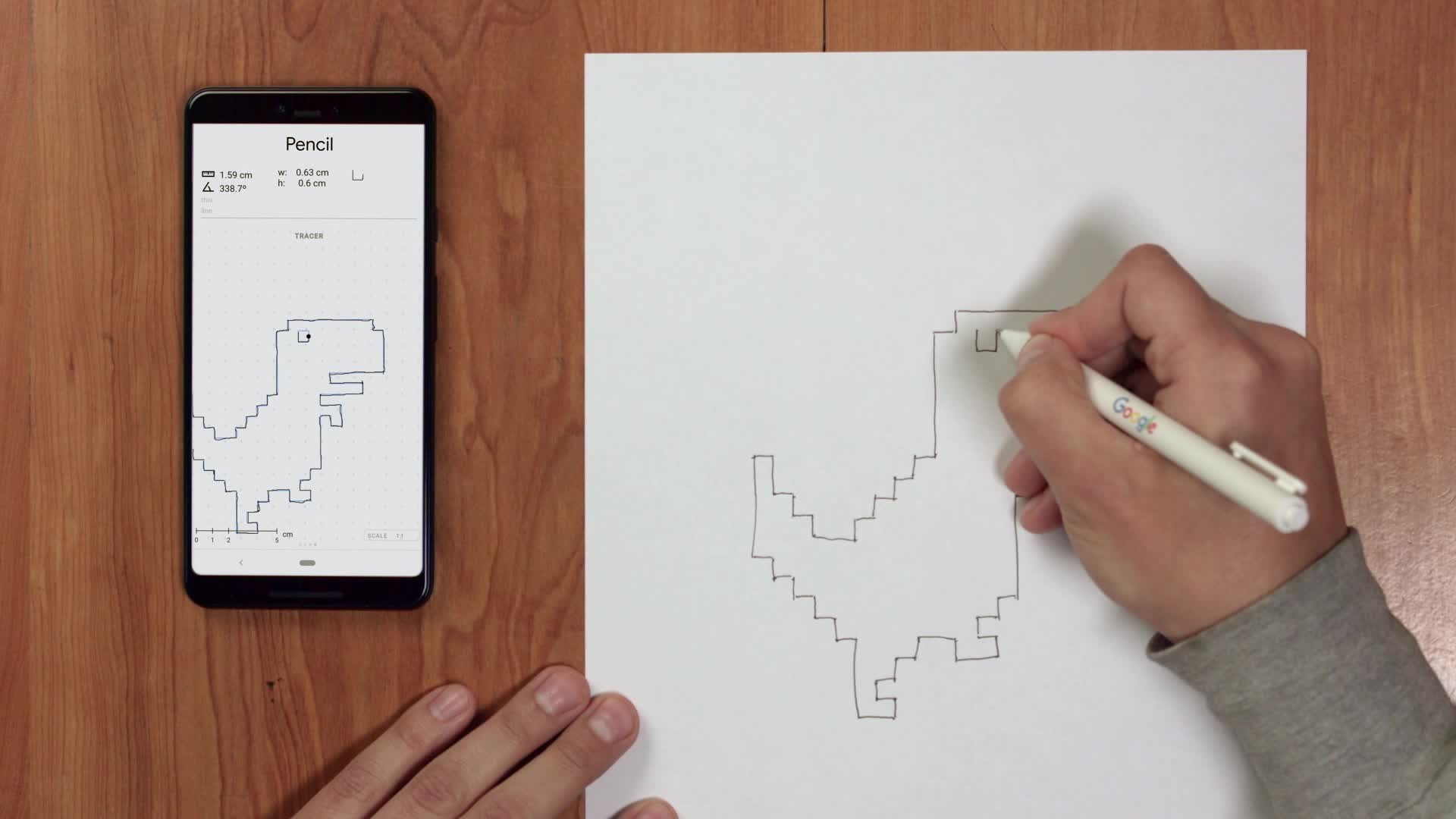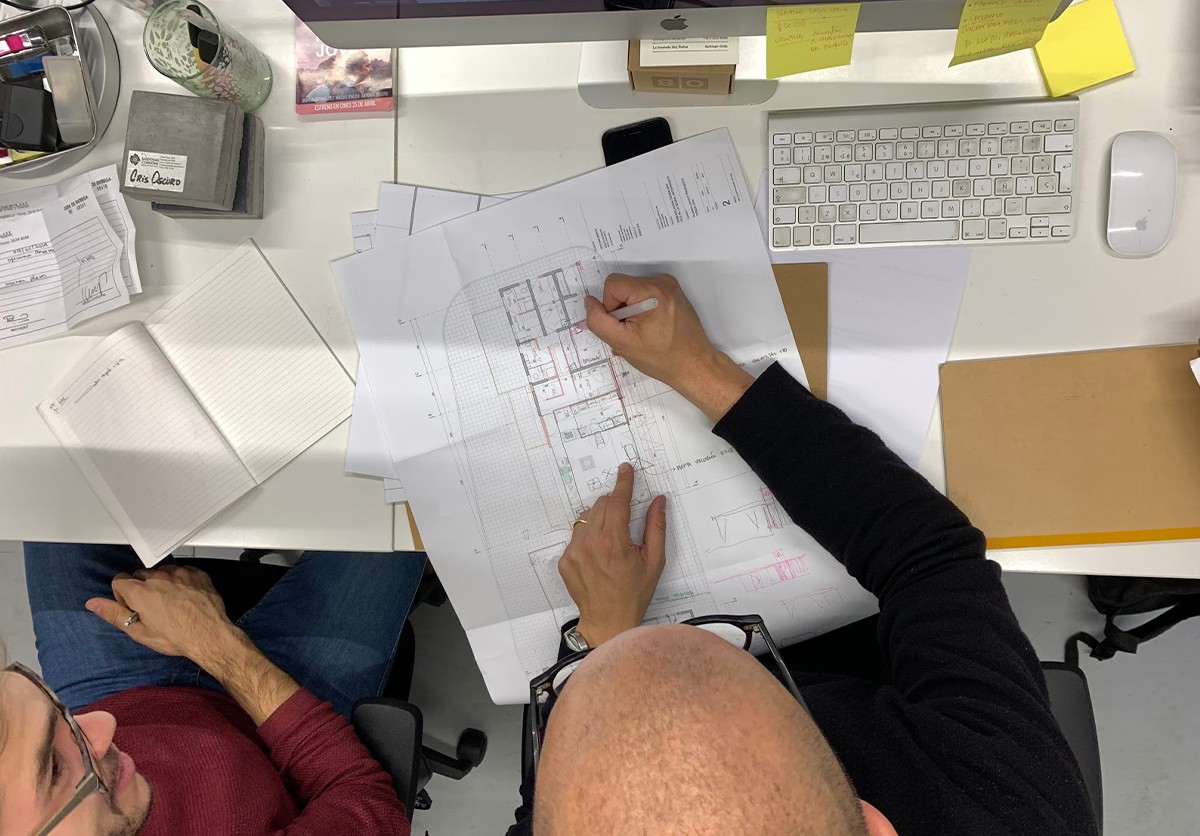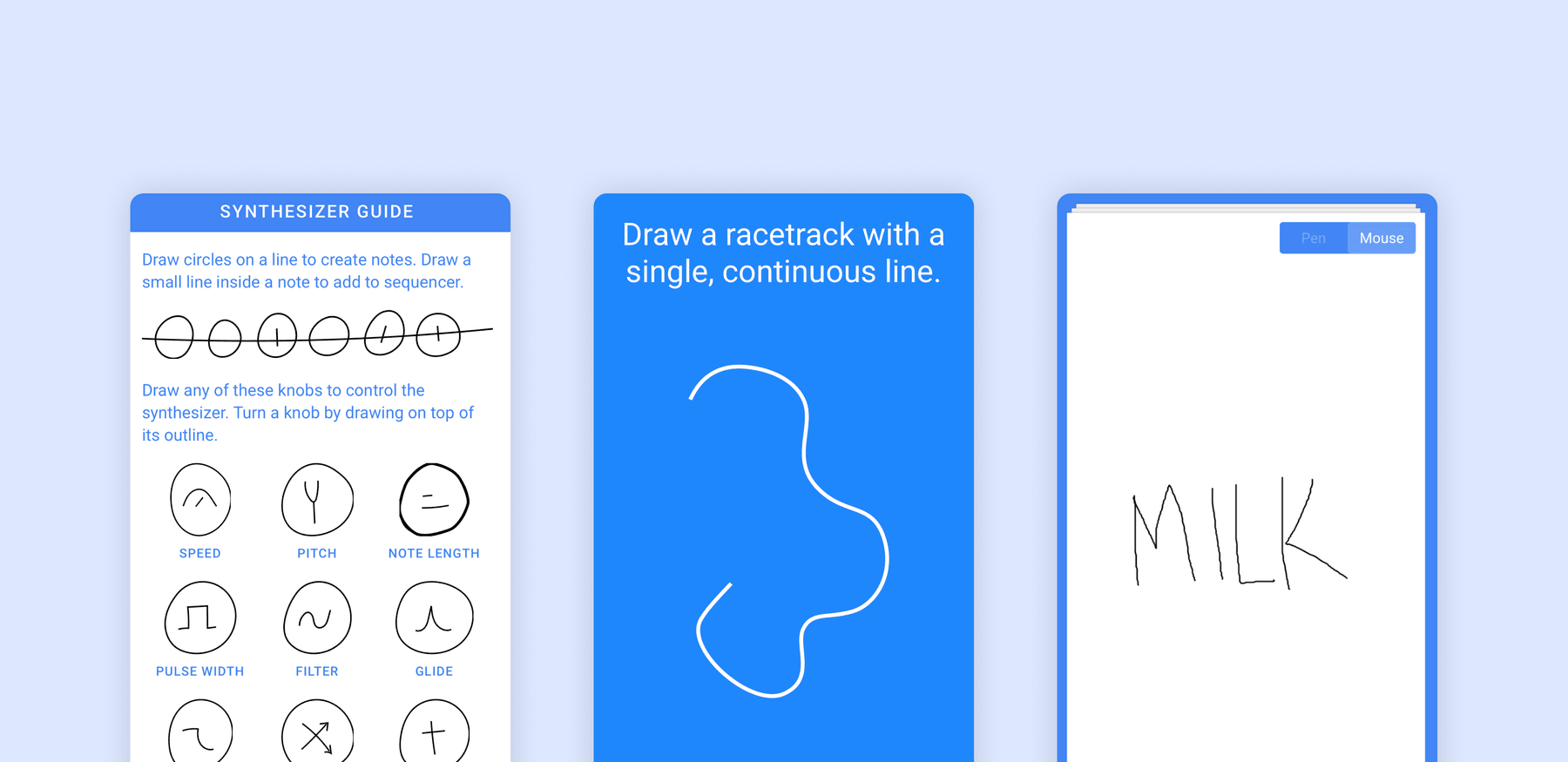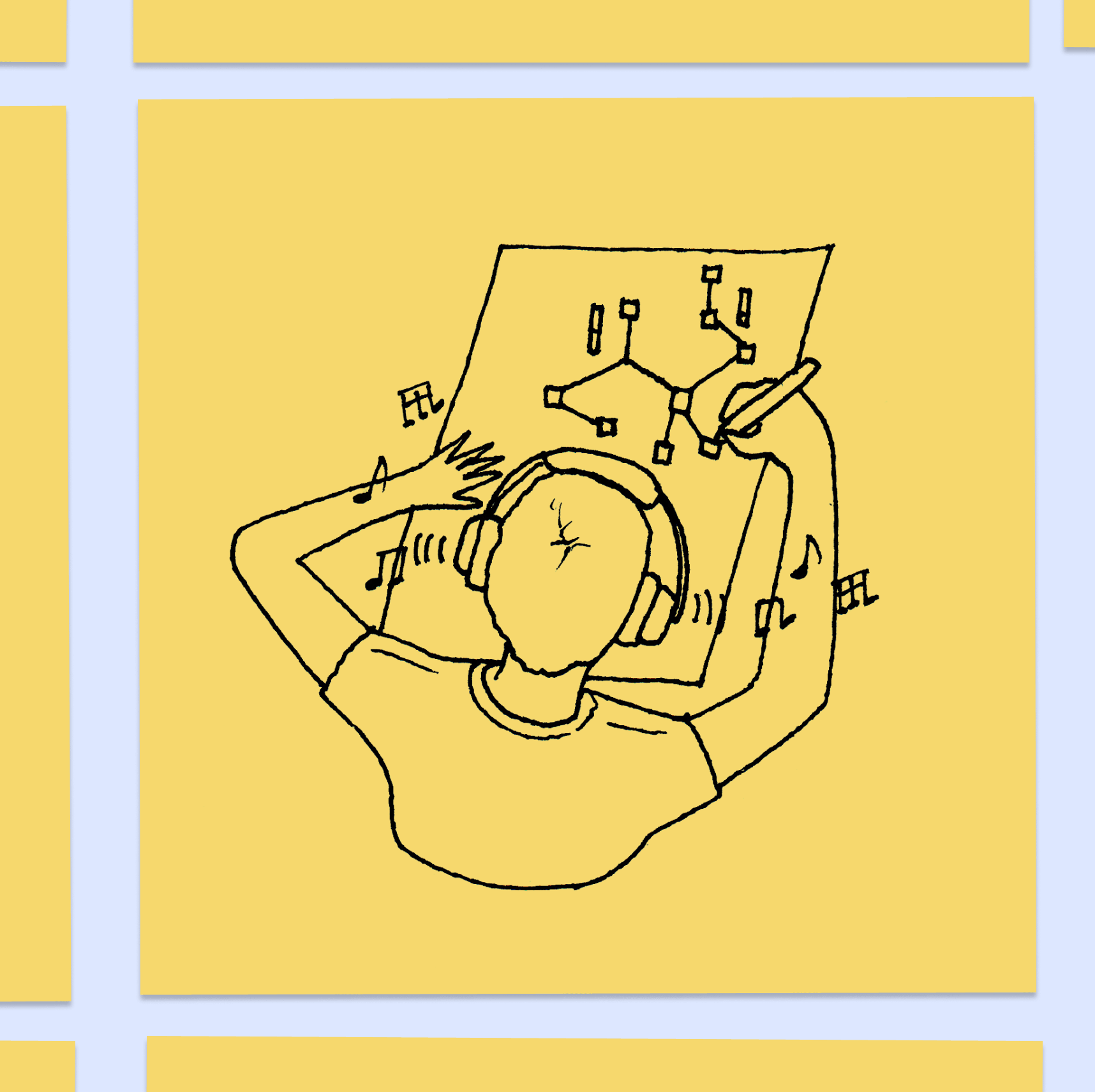Developing a set of functional prototypes and user experience principles for a low-cost, smart pen concept.
A Physical Object With A Digital Shadow
The core of this project was a smart pen that can save what it traces, know its position, and have automatic transcription from handwriting to digital text. Our focus was on developing single-session interactions that explore the potential of this technology to groups beyond Google's expected computer-savvy audience.

Embracing Tactility Across Use Cases
We performed a range of research tasks, including participant and non-participant observation, interviews, field notes, and competitor research to inspire the creation of the initial concepts. These tasks focused on both students and professionals in places where pen and paper are already used.

The screen-less environment of pen and paper holds great value in both learning and thinking.


Both analog and digital tools are often mixed fluidly by creatives based on what works best.
Kickstarting Broader Ideation
After the initial discovery, we explored 25 scenarios for the pen across categories across categories such as home, education, creativity, science, work and more with many overlapping. Four were selected to be developed as functional prototypes that demonstrate the potential of ATAP’s custom hardware.


































Prototyping Scenarios
The goal was to create a set of prototypes1 that were good enough to actually experience the scenario2, not to build production-ready software. We also created a user interface for quickly training the machine learning models with new pen data directly from the browser.
The Final Six
Four scenarios turned into six, each born of insights about learning and thinking through pen and paper, especially in the creative process.
Sketchable Synth makes it possible to create and play a synthesizer using just the pen and a piece of paper. Built for novices and experienced musicians alike, this synthesizer demonstrates a freehand and playful way to interact with a computer.
Carpenter's Pencil is a set of tools used with the pen and a companion phone to help you make precise measurements and drawings in the real world. Through unobtrusive sounds and a real-time interface, it brings smart features known from digital tools into the physical world.
Trace-a-Race is a game where participants challenge each other at drawing the fastest car to go around a hand-drawn race track. The game makes physical drawings come alive in the digital world while preserving the sense of freedom in real-world play.
Learn to Spell is an educational game played with the pen and Google Home where participants can practice their spelling. The call and response interactions creates a screen-free environment that promotes learning and memorization.
Walls and Balls is an open-ended game for kids and adults alike to play with their drawings in a virtual world. Participants can manipulate the gravity of this world with the gyroscope of a companion phone.
Exquisite Corpse is a take on the traditional drawing game where the corpse comes alive on a mobile phone. The game allows multiple participants to play with the pen and paper without being in the same location.
“Most smart pens fail because they try to mimic computers. This pen should feel familiar and natural. Like using a ballpoint and paper.”


